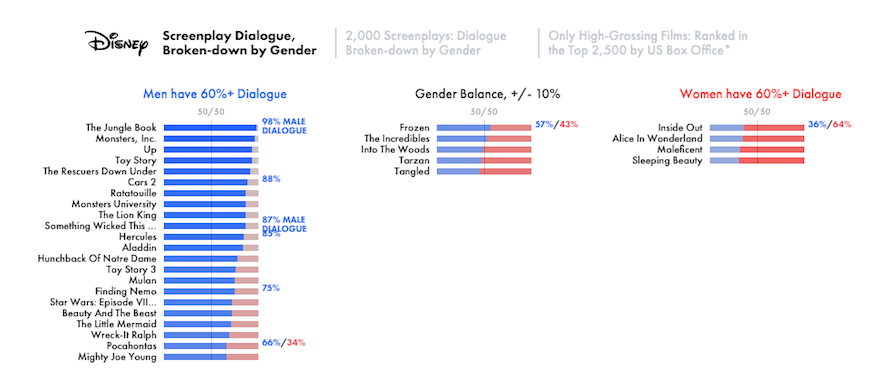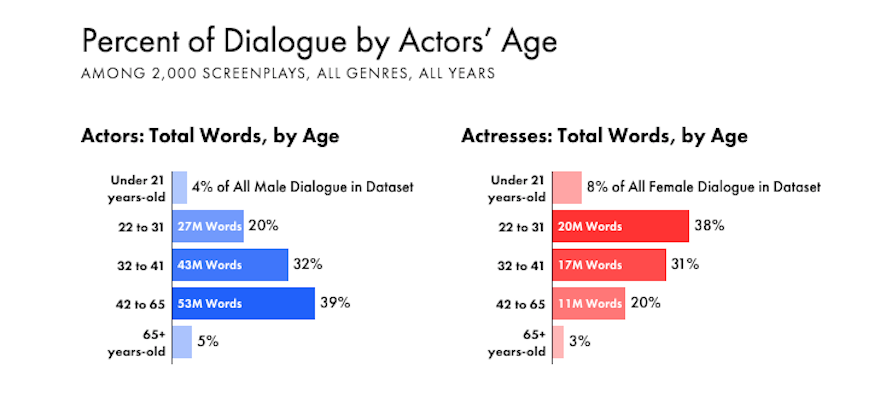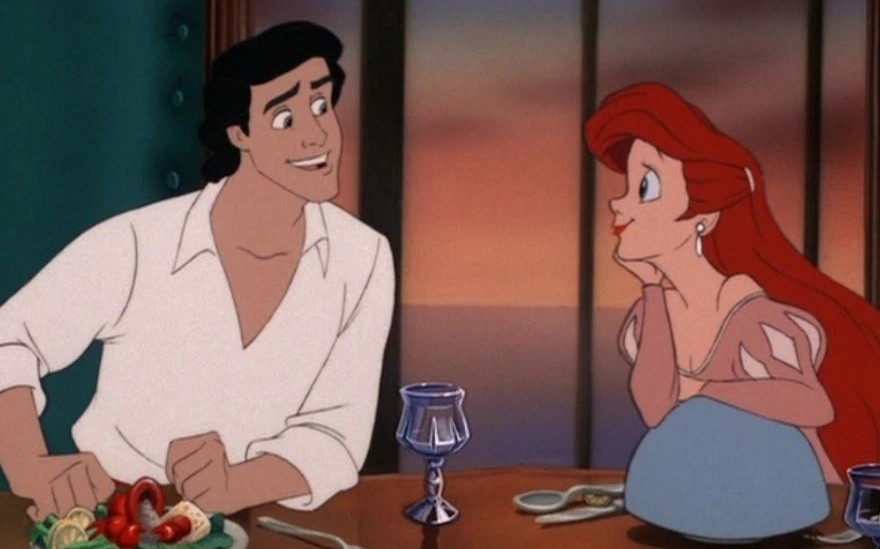When film critics discuss the limited types of roles available to women, it can be tempting to try to debunk their arguments by listing counter-examples. “What about Ellen Ripley?” one might say. “What about Furiosa?” Unfortunately, a few well-written roles cannot make up for an overwhelming systemic disparity. The difficulty with this type of counter-argument is that it assumes an all-or-nothing mindset, as if feminists are claiming there are no positive roles for women at all. Rather, feminist critiques often focus on disproportionate lack of opportunity, something that becomes clear in Polygraph’s latest study of how dialogue is distributed among genders in movies, which seeks to back up these oftentimes anecdotal and theoretical arguments with cold, hard data.

Culled from 2000 screenplays, the study maps movie dialogue across IMDB actor listings, creating a breakdown of which percentage of lines are spoken by men and which are spoken by women. The idea for the project was born out of the response to Polygraph’s previous study on the Bechdel Test, which simply requires films to have two named female characters who speak to each other about something other than a man, as the group hoped that looking at dialogue as a whole would allow them to address questions that the Bechdel Test does not. For instance, the study also breaks down dialogue by age, allowing readers to compare the differences male and female actors experience as they get older.
The results seem to support the feminist rhetoric Polygraph was seeking to interrogate, as out of 2000 films, only 321 had dialogue that was equally shared among men and women. Meanwhile, 1208 films had dialogue that was 60-90% male, 304 films had dialogue that was greater than 90% male, 165 films had dialogue that was 60-90% female, and only 8 films had dialogue that was greater than 90% female. Even films that are targeted at a female audience, such as Disney Princess movies and romantic comedies, had dialogue that was majority male. Meanwhile, the data reads that men tend to be offered more roles as they get older, whereas women are offered fewer.

That said, the researchers do recognize that their research methodology has room for error. For example, the study only takes into account characters with over 100 words of dialogue, meaning that films like Schindler’s List may be characterized as having entirely male dialogue, when they are in fact closer to having 99.5% male dialogue. Additionally, the study cannot take into account differences between a script and a final film, meaning that while Polygraph still stands behind the general direction of their study, individual films may have errors.
Still, Polygraph claims that the study is “arguably the largest undertaking of script analysis, ever,” and even if it’s “still not perfect…we’re now in a much better place than ‘you know…women are never love-interests when they’re older than 40. ¯\_(ツ)_/¯’”
